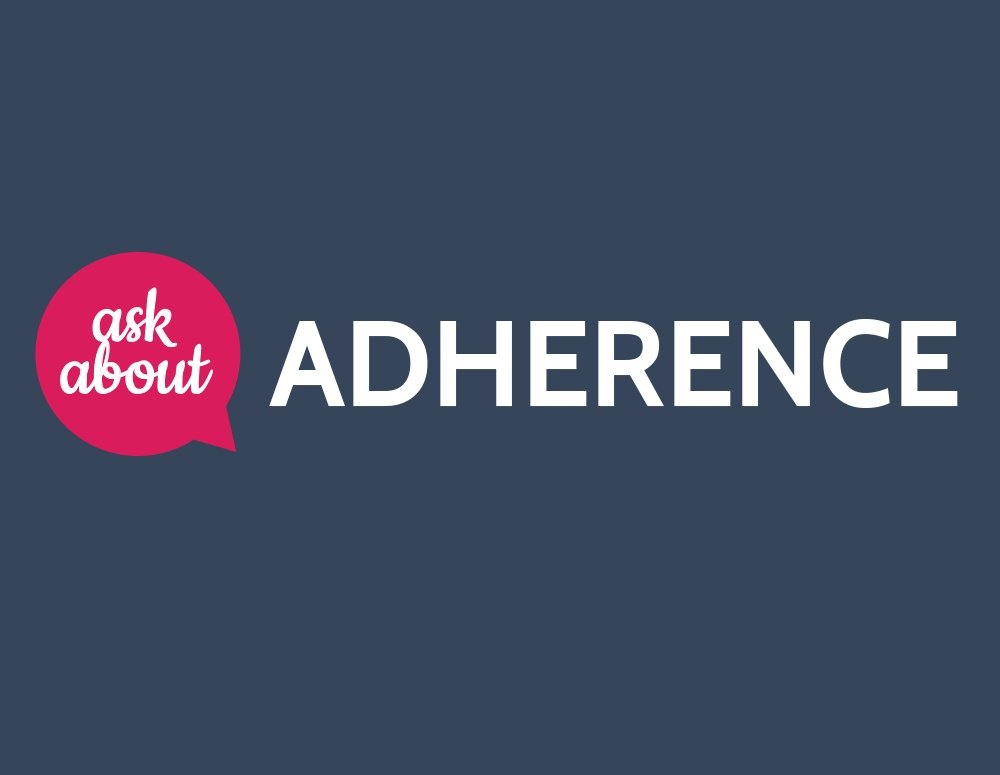 Ask About Adherence is a blog series featuring Q&A’s with experts in medication adherence. In this post, we speak with Dominique Comer, Pharm.D., MS, senior clinical investigator and scholar with Christiana Care Health System’s Value Institute, about her newly published study, “Using Aggregated Pharmacy Claims to Identify Primary Nonadherence,” in the American Journal of Managed Care (AJMC). In the study, she examines pharmacy claim data to pinpoint patients who did not fill antihypertensive drug prescriptions given by their physicians. Based on an analysis of data available through electronic health records, one-third of patients did not fill their prescription within the first 30 days.
Ask About Adherence is a blog series featuring Q&A’s with experts in medication adherence. In this post, we speak with Dominique Comer, Pharm.D., MS, senior clinical investigator and scholar with Christiana Care Health System’s Value Institute, about her newly published study, “Using Aggregated Pharmacy Claims to Identify Primary Nonadherence,” in the American Journal of Managed Care (AJMC). In the study, she examines pharmacy claim data to pinpoint patients who did not fill antihypertensive drug prescriptions given by their physicians. Based on an analysis of data available through electronic health records, one-third of patients did not fill their prescription within the first 30 days.
Stay tuned for the next Q&A, and be sure to share your thoughts in the comments section below. We’d love to hear from you on ways to improve medication adherence!
SAMANTHA DOUGHERTY: What is primary nonadherence, and why is it important to study?
DOMINIQUE COMER: Primary nonadherence occurs when a patient delays initial treatment or never fills their medication at all. Several studies, including ours, suggest 30 percent of patients do not fill a prescribed medication for a chronic condition like hypertension. This is a critical subject to study, especially as a delay in receiving necessary pharmacotherapy may lead to medical complications, unplanned readmissions and increased costs to the patient and system.
DOUGHERTY: What are the challenges in estimating primary nonadherence (e.g., limitations in data sources)?
COMER: For this study, we were very interested in the availability and reliability of pharmacy claims data in primary care and how they can be used to inform care in different ways. While claims data were a valuable source for understanding primary nonadherence, they may be limited in that claims may not contain cash and coupon prescriptions and do not account for samples given during the office visit. The documentation of these additional data integrated into the electronic medical record would greatly advance our comprehensive understanding of primary nonadherence.
DOUGHERTY: What were the most alarming findings from your study?
COMER: The most alarming finding is that we noted that a third of patients prescribed a medication for hypertension did not have evidence of filling the medication. This may be due to a lack of urgency from the patient to fill their medication (as hypertension is asymptomatic in nature; we also saw an association of primary nonadherence to lower diastolic blood pressure), yet this is not clear from our data; more work needs to be done.
DOUGHERTY: Most adherence studies fail to account for patients who do not initiate treatment. What are the implications for understanding and improving population health care?
 COMER: Adherence studies traditionally include patients after they have filled at least one medication, yielding adherence rates that exclude those who do not initiate therapy at all. As more adherence studies include patients with primary nonadherence, the denominator increases, and we’ll likely find that overall medication adherence may be much lower than previously reported. A more reliable adherence rate may also lead to a clearer understanding of the barriers and needs of nonadherent patients.
COMER: Adherence studies traditionally include patients after they have filled at least one medication, yielding adherence rates that exclude those who do not initiate therapy at all. As more adherence studies include patients with primary nonadherence, the denominator increases, and we’ll likely find that overall medication adherence may be much lower than previously reported. A more reliable adherence rate may also lead to a clearer understanding of the barriers and needs of nonadherent patients.



 Ask About Adherence is a blog series featuring Q&A’s with experts in medication adherence. In this post, we speak with Dominique Comer, Pharm.D., MS, senior clinical investigator and scholar with Christiana Care Health System’s
Ask About Adherence is a blog series featuring Q&A’s with experts in medication adherence. In this post, we speak with Dominique Comer, Pharm.D., MS, senior clinical investigator and scholar with Christiana Care Health System’s  COMER: Adherence studies traditionally include patients after they have filled at least one medication, yielding adherence rates that exclude those who do not initiate therapy at all. As more adherence studies include patients with primary nonadherence, the denominator increases, and we’ll likely find that overall medication adherence may be much lower than previously reported. A more reliable adherence rate may also lead to a clearer understanding of the barriers and needs of nonadherent patients.
COMER: Adherence studies traditionally include patients after they have filled at least one medication, yielding adherence rates that exclude those who do not initiate therapy at all. As more adherence studies include patients with primary nonadherence, the denominator increases, and we’ll likely find that overall medication adherence may be much lower than previously reported. A more reliable adherence rate may also lead to a clearer understanding of the barriers and needs of nonadherent patients.